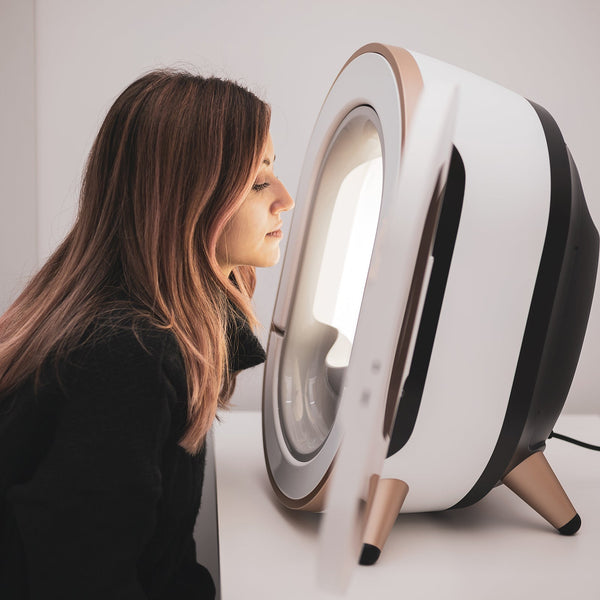Breakout Bingo: Detecting Jawline Breakouts

According to the American Academy of Dermatology, acne is the most common skin condition in the United States, affecting up to 50 million Americans annually. It usually begins in puberty and affects many adolescents and young adults. Approximately 85% of people between the ages of 12 and 24 experience at least some form of minor acne. 15% of the sufferers have acne severe enough to cause scarring. Furthermore, several studies have confirmed that acne can affect a person’s quality of life, self-esteem, and lead to prominent emotional and psychological issues.
Not all acne has the same causes or succumbs to the same cookie-cutter treatment plan. The first step in treating your client is identifying the symptoms and creating a holistic program encompassing diet recommendations, in-treatment product, and homecare recommendations.
HORMONAL ISSUES
The jaw area is widely regarded as being connected to the intestines by several schools of thought, including traditional Chinese medicine (TCM). It is no coincidence that the yellow (stomach), red (small intestine), and gray (large intestine) meridian lines all lay along the jawline.
Recurring acne on the chin is a sign of issues with the uterus, ovaries, and reproductive organs. Chin breakouts are usually called hormonal for this reason. Acne in these areas is often caused by the skin’s oil glands overreacting to hormonal responses, which can be triggered by factors such as stress, eating too much sugar or dairy, alcohol consumption, or the fluctuations that happen during women’s menstrual cycles. Also, women who have a hormonal imbalance due to a condition such as polycystic ovary syndrome (PCOS) may develop hormonal acne. Most importantly, if your client develops acne in that region, chances are that they also have inflammation elsewhere in the body.
LEAKY GUT
Jawline breakouts are almost always a symptom of digestive issues, leaky gut, and candida. We have an extensive intestinal lining covering more than 2,700-square-feet of surface area. When working properly, it forms a tight barrier that controls what gets absorbed into the bloodstream. Leaky gut, also known as increased intestinal permeability, is a digestive condition in which bacteria and toxins are able to leak through the intestinal wall. This may trigger inflammation and changes in the gut flora that could lead to problems within the digestive tract and beyond. A leaky gut is an inflamed gut. One way to detect leaky gut is to watch out for irregular bowel movements, constipation for days, or loose stool multiple times a day. Other possible signs of inflammation include bloating, gas, heartburn, nasal congestion, headaches, anxiety or depression, and, of course, acne along the jawline.
Even more so than extreme stress, food is the most common gut irritant. The wrong kinds of food feed infection and inflammation and, thus, lead to acne. Candida and inflammation thrives on grains, especially those that contain gluten (like wheat, rye, and barley), mushrooms, beans, dairy, nuts, and refined seed oils (canola oil, corn oil, peanut oil, safflower oil, and vegetable oil). These are almost always rancid and contain disproportionately high levels of omega-6 fats, which have been shown to contribute to inflammation.
ANTIBIOTICS
In addition to leaky gut, if a client has ever taken a course of antibiotics, his or her inner ecosystem is out of balance. The same goes for clients on oral contraceptives. This is because many pills cause an overabundance of candida in the genital area, in particular, due to the overstimulation of sebum production. They also generally increase the acidity of the vagina and lead to fungal acne.
Acidic, sugary, and a simple carbohydrate-based diet, which requires lots of salivary glucose, provides an excellent breeding ground for this kind of yeast. For that reason, your client should be steering clear from sugar, coffee, alcohol, various nuts and fruits, soft drinks, dairy, iodized salt, and any kind of processed meats and mushrooms. The good news is that the inner ecosystem can be rebuilt by incorporating fermented foods into a client’s diet, along with probiotics and correctly balanced meals. It is a process, but jawline breakouts can be treated holistically when both the aesthetician and client are on the same page about the plan of action.









